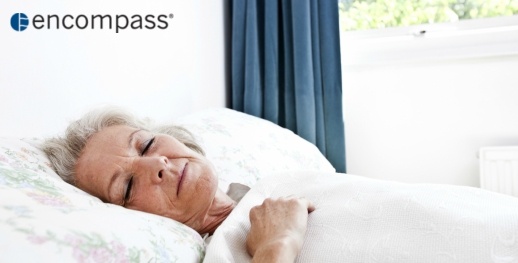Are you looking for a solution that makes it easier for you to protect your residents against pressure ulcer development? Consider the many benefits of a pressure redistribution system.

Prevent Pressure Ulcer Development to Protect your Five-Star Rating
Every senior living purchasing agent’s goal is to supply his or her employer with the products and tools needed to optimize resident outcomes while minimizing costs. Sometimes minimizing costs means minimizing missed opportunities to maximize revenue.
Have you recently sent out a Request for Purchase (RFP) for new pressure redistribution systems? Here’s something to consider when choosing new support surfaces for your residents:
What are pressure ulcers?
Pressure sores, bedsores, or pressure ulcers are injuries on one’s skin and underlying tissue caused by being in a bed or chair for prolonged periods of time. These sores typically develop over bony parts of one’s body including the heels, hips, shoulder blades, ankles, and tailbone. Pressure ulcers can develop quickly for individuals who are experiencing immobility and overall poor health, even if their immobility is temporary.
Pressure ulcers change appearance over four stages. In the beginning, the sores appear red. By Stage 3 and Stage 4 (these are most serious type of pressure injuries and are considered a “never event”), the sores are deep and open. A pressure ulcer of any stage is painful and has the potential to lead to additional infections if not cared for properly. Additionally, some chronic diseases may increase the time it takes for a pressure ulcer to heal, leaving the individual vulnerable to infection for longer periods of time.
How pressure ulcers impact your Five-Star Rating and your reimbursement
The Centers for Medicare & Medicaid Services (CMS) created the Five-Star Rating system as an objective measure of a skilled nursing facility care quality. The rating is meant to help consumers, lenders, providers, and management recognize quality issues; poor ratings impact a facility's reputation.
To determine a facility’s Five-Star Rating, trained inspectors review medical records and interview residents during their assessments. Skin breakdown is a growing concern in care delivery, and frequent reports of skin breakdown will reflect poorly on your facility’s state health measure.
Related: Pressure injury prevention & treatment strategies in healthcare facilities.
Not only could your Five-Star rating affect your occupancy rates, but it could also influence other organizations considering to work with your facility. For example, insurers consider these ratings when setting up their service networks and many Medicaid managed care plans, Medicare Advantage plans and Medicare Special Needs plans will not include nursing homes with less than 3-star ratings. Accountable Care Organizations (ACOs) may be allowed to waive the CMS required 3-day hospital stay before Medicare will pay for a skilled nursing facility when the residents go to nursing homes with at least 3-star ratings. There are multiple other ways a poor rating could impact your facility’s finances.
Reports of Stage 3 or Stage 4 pressure ulcers acquired after admission to a senior living facility will reflect poorly on that facility’s quality measures. If one or two of the three measures that make a facility’s rating are poor, the facility’s overall rating will be reduced significantly. Once a facility’s Five-Star Rating is below a three, it’s far more difficult to get back to an acceptable rating than it is to maintain a good rating.
Protect residents with a pressure redistribution support system.
The best way to protect residents and your rating is to implement products that stop pressure ulcers from ever developing. Pressure relieving and redistributing therapeutic support surfaces are widely accepted methods to relieve pressure on vulnerable parts of the body and prevent the development of pressure ulcers.
Seek a therapeutic support system that provides air support and exchange to meet the needs of residents of nearly any size, shape, or weight giving them the pressure reduction they need to keep them safe. A system with a heel slope design offers added protection that allows the calf to bear more of the leg's weight rather than the heel. Additionally, because infection prevention is equally important, seek a solution that includes antibacterial and antimicrobial-treated components of the surface to help prevent skin infections due to exposure.
Senior living facilities with high Five-Star Ratings make resident outcomes a top-priority when purchasing care products. Choose a therapeutic support system that makes it easier for you to keep your residents safe and comfortable.
Who better to provide you with a system you can trust than Encompass Group, the company that has been the leader in cost-effective long-term care support surfaces for more than 40 years? Call 1-800-245-4636 or email me today to learn more about how our systems can add protection for your residents and Five-Star Rating.


